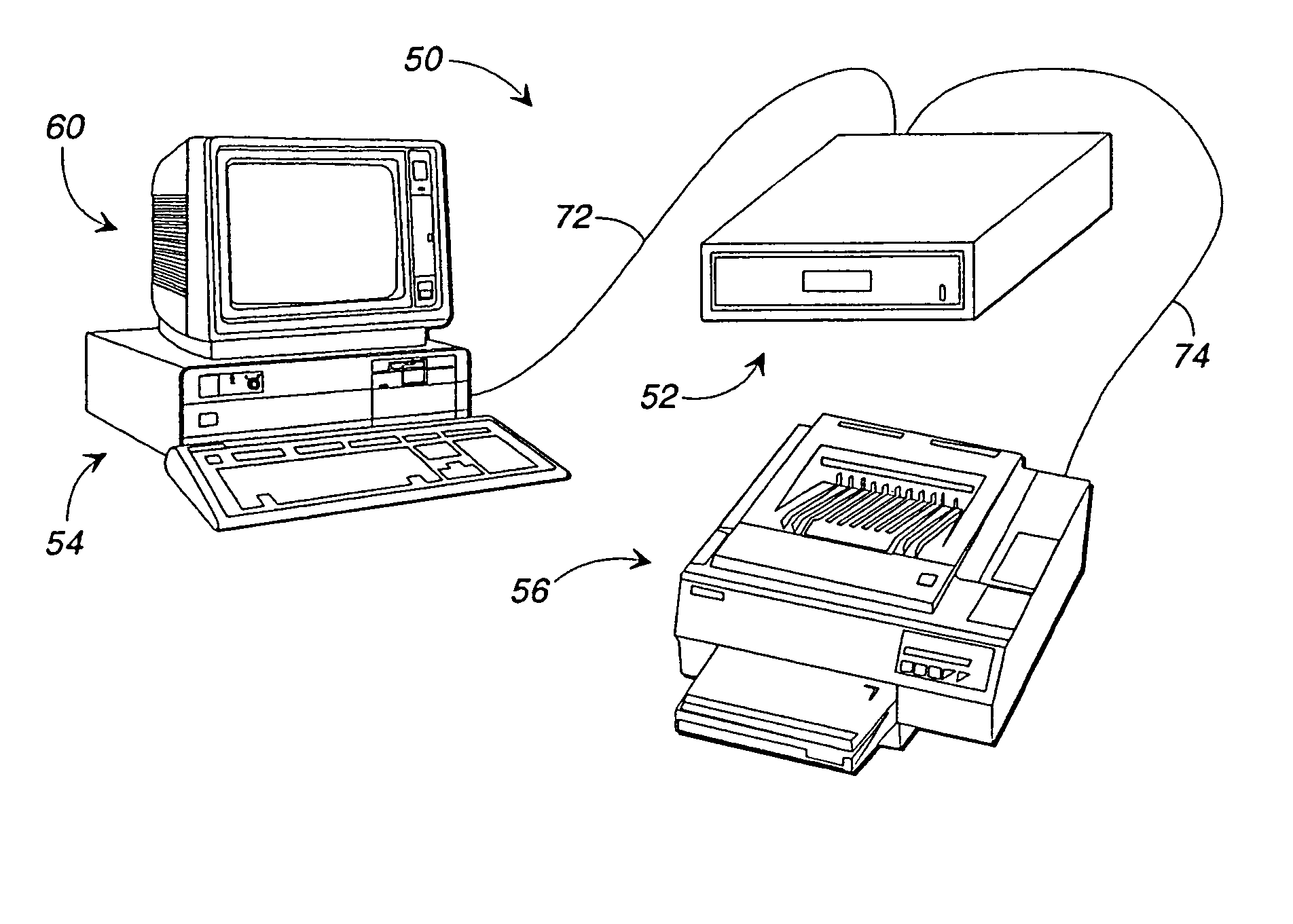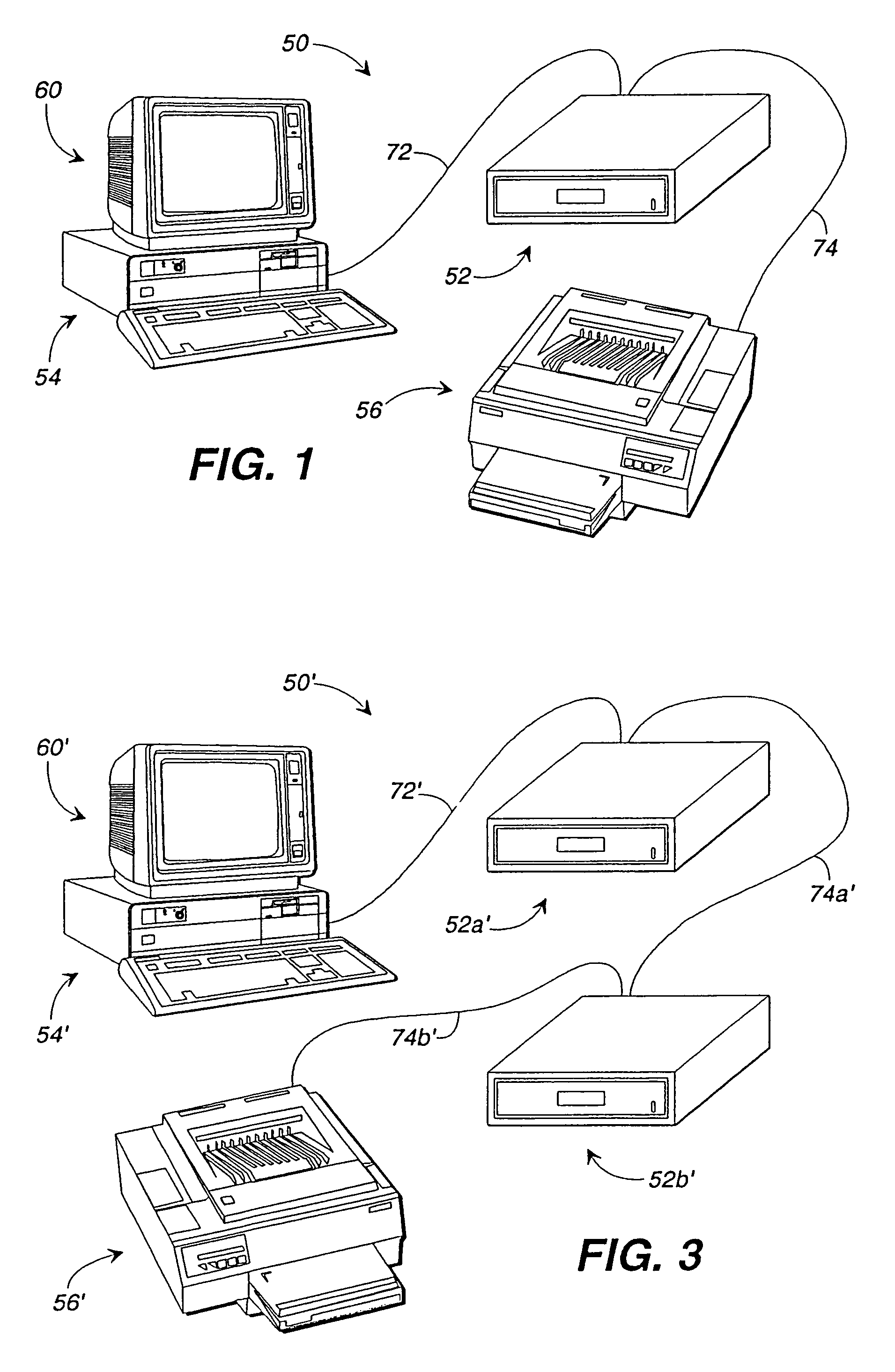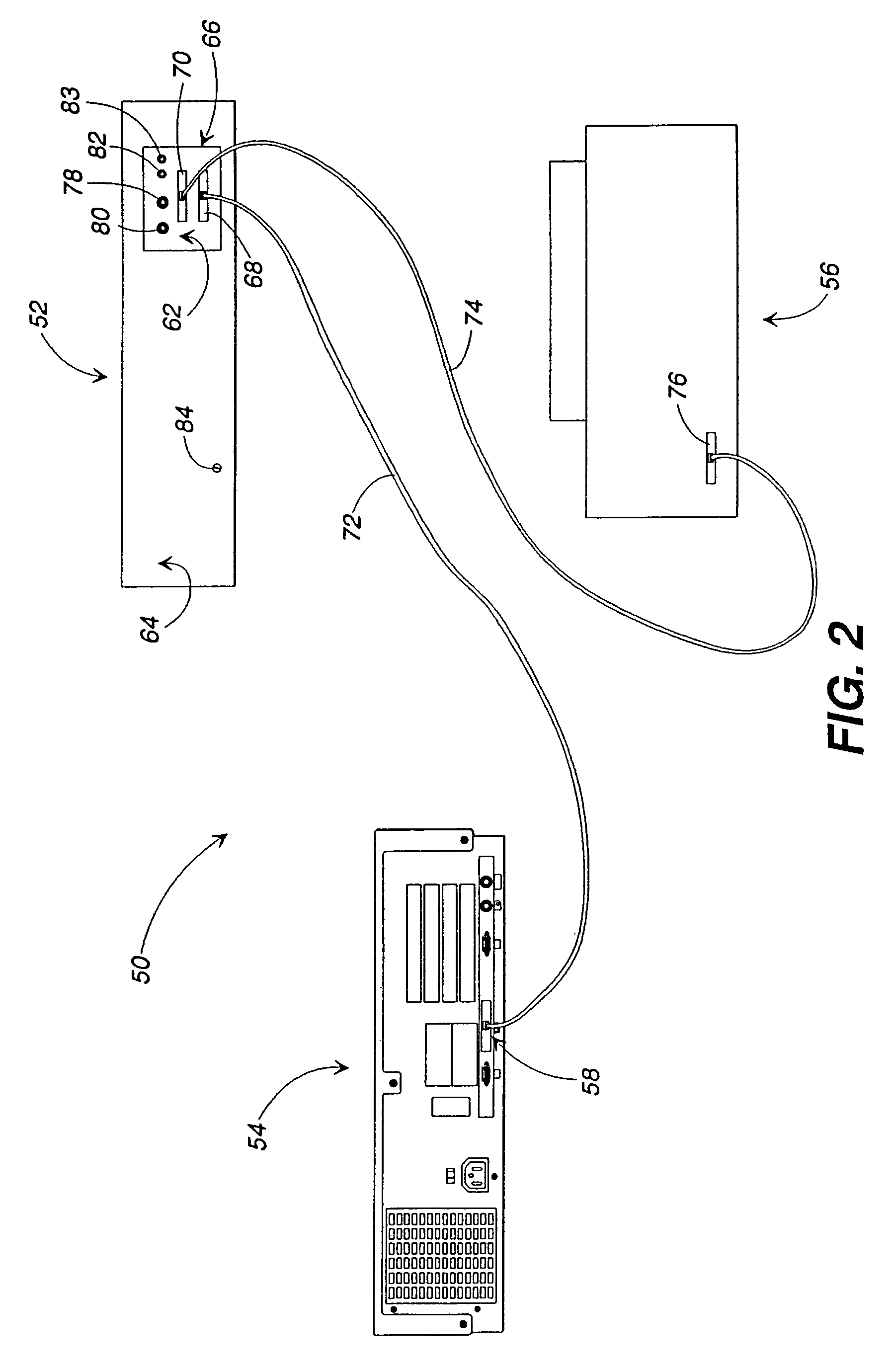Inventoriable-object control and tracking system
a technology for controlling and tracking access to inventions, applied in the direction of individual entry/exit registers, mechanical actuation of burglar alarms, instruments, etc., can solve the problems of creating legal liability, other objects may be inherently dangerous, explosives and many medicines are inherently dangerous,
- Summary
- Abstract
- Description
- Claims
- Application Information
AI Technical Summary
Benefits of technology
Problems solved by technology
Method used
Image
Examples
Embodiment Construction
[0079]Referring now to the drawings, in which like numerals represent like components throughout the several views, an inventory control and tracking system 50, in accordance with the first preferred embodiment of the present invention, is displayed in FIGS. 1 and 2. The inventory control and tracking system 50 comprises an inventoriable-object storage unit 52 which is electronically interposed between a remote controller 54 and a printer 56. An example of a remote controller 54, acceptable in accordance with the present invention, is an IBM-compatible personal computer having a central processing unit, a hard disk drive, a random access memory, a keyboard, a video interface, and a parallel communications port 58 (or data communication interface 58). A video monitor 60 resides atop the remote controller 54 and receives video data for display to system users. The components of the remote controller 54 and video monitor 60 perform in accordance with their conventional functions, there...
PUM
 Login to View More
Login to View More Abstract
Description
Claims
Application Information
 Login to View More
Login to View More - R&D
- Intellectual Property
- Life Sciences
- Materials
- Tech Scout
- Unparalleled Data Quality
- Higher Quality Content
- 60% Fewer Hallucinations
Browse by: Latest US Patents, China's latest patents, Technical Efficacy Thesaurus, Application Domain, Technology Topic, Popular Technical Reports.
© 2025 PatSnap. All rights reserved.Legal|Privacy policy|Modern Slavery Act Transparency Statement|Sitemap|About US| Contact US: help@patsnap.com



